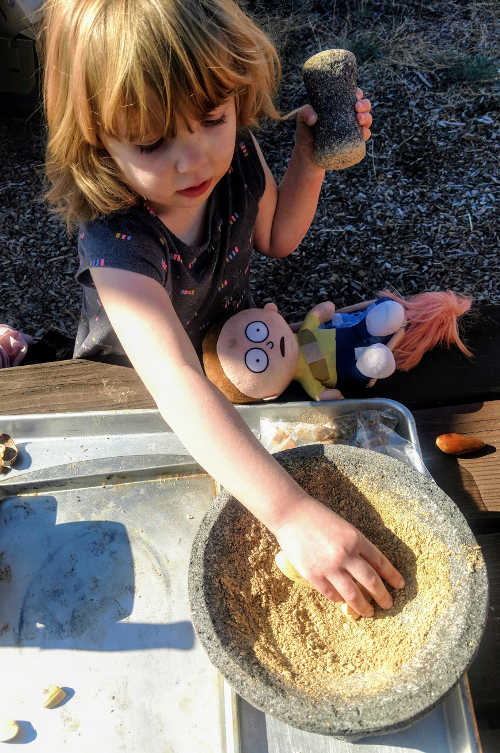
LAKE COUNTY, Calif. – The sun was warm and bright on a recent fall day when my granddaughter and I visited the community garden on the campus of the Lake County Tribal Health Consortium in Lakeport.
The well-designed garden was lush with end-of-season greenery. Wooden benches, picnic tables and a centerpiece gazebo for tribal elders provided lots of seating for events and classes that are held there on a seasonal basis. It was obvious that the space was well-tended and well-used.
We were there that day to learn about the traditional preparation of local acorns for culinary use.
While my granddaughter hunted for strawberries among the raised beds, I listened with rapt attention as Patty Franklin of the Scotts Valley Band of Pomo Indians demonstrated acorn processing step by step with her daughter and son assisting.
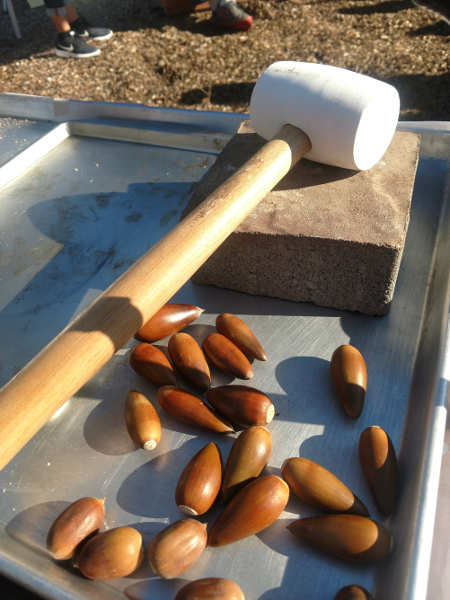
Franklin has been instrumental in attempts to revive the tradition of gathering and processing acorns for food. She pointed out that this free resource provides 6 grams of protein and other key nutrients for every ounce of flour.
While edible acorns come from a variety of oak tree species in Lake County, Franklin prefers gathering acorns from valley oaks for a practical reason: the nuts are bigger (long and bullet-shaped, in contrast to shorter, rounder types), thus providing more food for less effort.
According to Franklin, peak acorn gathering season is from the end of September through November, though they can be gathered into winter and through much of spring.
Once gathered, acorns should be sorted, casting aside any not suitable for use, such as those that have holes caused by the larvae of long-snouted acorn weevils or other pests.
The acorns should then be cracked open to retrieve the nut meat within. This can be done by laying acorns on a hard surface and using a hammer or mallet to crack them. In earlier times, a stone hammer on a flat rock was used.
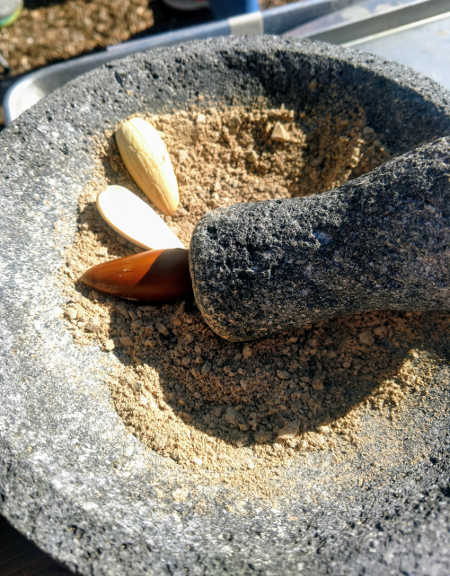
The acorn meat should then be dried, either spread out in the sun or in an oven set on a low temperature. It typically takes a few days in the sun to achieve the appropriate level dryness. Of course, if the air is humid or pests are a problem, this wouldn’t be a good method. If using an oven, a close watch should be kept on them to avoid burning.
Once dried, the acorn meat can be ground into flour. The traditional method for this is with a stone mortar and pestle, though a nut grinder, blender or food processor can be used. Franklin prefers the more time-consuming method of mortar and pestle, as it helps one to slow down and appreciate the effort that goes into food preparation.
At this point, the flour should be sifted to remove any large pieces that might remain. They can be tossed back into the mortar for further grinding. An open-weave basket was traditionally used for the sifting process; however, today a metal sieve may be used.
Because acorns contain a bitter-tasting tannin, the flour must go through a process of leaching with water prior to using it. There are several methods for this, and Franklin recommends using one of two, either drip leaching or leaching in a jar.
Her favorite method is drip leaching, as it’s faster and less labor-intensive. Flour should be put in a colander well-lined with fine cheesecloth and allowed to stand for 24 hours under a faucet turned to a slow drip. The water will collect in the colander and slowly drain out throughout the period, allowing tannins to be leached out of the flour.
To use the jar method, put the flour in a jar with a tight-fitting lid, cover the flour with plenty of water, and store the jar in the refrigerator for ten days. The water should be changed twice a day. The water will change color as the tannins release.
Once leaching is complete, the flour may be frozen and stored, dried and stored, or used immediately.
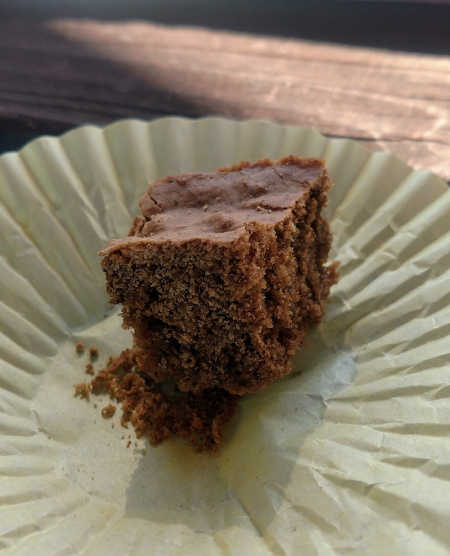
Weeks earlier I had had the privilege of sitting with Millie Simon of the Middletown Rancheria of Pomo Indians as she graciously shared with me her memories of traditional foods she ate while growing up.
In those days, there were only a handful of families living on the rancheria, most of them Simons.
Her father provided meat for the family by hunting, and they regularly ate deer and rabbit, as well as fish from local creeks, mostly steelhead trout.
Her parents ate a traditional native diet, and she recalls meals that included foods gathered from the wild, such as watercress, clover, blackberries and wild strawberries.
Pine nuts from the cones of native trees were also collected. Simon had a hand in this and remembers competing with the squirrels for them.
Seaweed was also a staple in their home, usually during May and June, and was cooked on the woodstove in flavorful fat.
Gathering and processing acorns was a regular activity in her family. They collected the short, stubby nuts from tanoak trees, which, from what I understand from other sources, is the acorn considered the tastiest.
Their method of processing acorns included a one-year drying time in their shells. In Simon’s family, the season’s haul was stored near the fireplace until ready for use the following year.
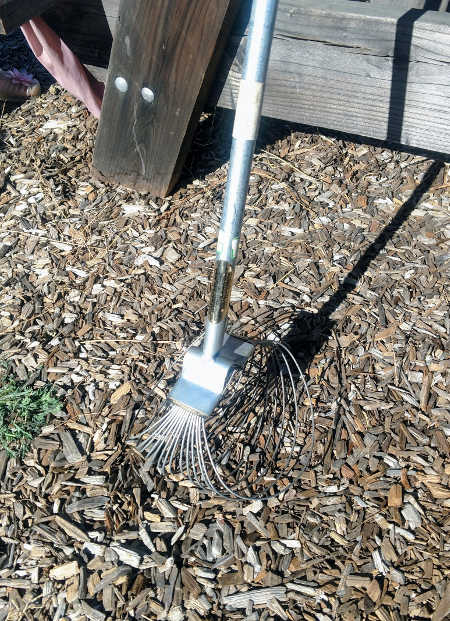
Once the acorns were cracked and ground, Simon’s family leached the flour by soaking it in water, which typically took three to four days. The flour was put in a wire mesh strainer lined with cloth. Water was added to cover the flour, allowing it to soak as the water slowly drained out. This was repeated until the flour was free of bitterness, at times taking up to five days.
A traditional way to use acorn flour is to make acorn mush, done originally by adding red-hot rocks to flour and water in a watertight basket. The rocks were stirred with a stick to avoid burning the basket until the mixture thickened.
Sometimes dried elderberries or dried fish were added to the mush while cooking.
The flour and water mixture could also be baked in an oven, making a kind of bread.
Today’s recipe is for acorn bread, courtesy of Patty Franklin. She brought samples from a freshly baked loaf to her presentation, and it was delicious, with a pleasant nutty flavor. My granddaughter liked it, too; she asked for seconds, and that’s an honest compliment.
I wish to extend my thanks to Patty Franklin of the Scotts Valley Band of Pomo Indians, Millie Simon of the Middletown Rancheria of Pomo Indians, Sonia Chamberlain of the Lake County Tribal Health Consortium, and personal friend Kathy Roberts for their invaluable assistance on this column.
Acorn bread
Ingredients
1 cup acorn meal (leached)
1 cup all-purpose flour
3 teaspoons baking powder
1 teaspoon salt
3 tablespoons sugar
1 egg, beaten
1 cup milk
3 tablespoons oil
Instructions
Preheat oven to 400 degrees F.
Grease a square baking pan (8 inches by 8 inches).
Sift the dry ingredients together.
Add the liquids, stirring just enough to moisten.
Pour into greased pan and bake 30 minutes.
Cool on rack.
Recipe courtesy of Patty Franklin, Scotts Valley Band of Pomo Indians.
Esther Oertel is a writer and passionate home cook from a family of chefs. She grew up in a restaurant, where she began creating recipes from a young age. She’s taught culinary classes in a variety of venues in Lake County and previously wrote “The Veggie Girl” column for Lake County News. Most recently she’s taught culinary classes at Sur La Table in Santa Rosa, Calif. She lives in Middletown, Calif.

 How to resolve AdBlock issue?
How to resolve AdBlock issue? 



